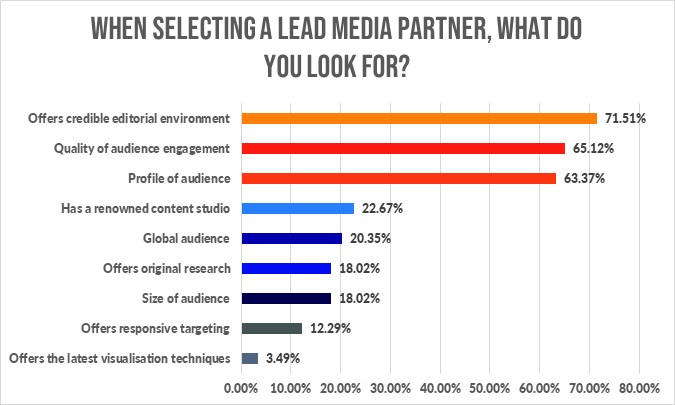The rise of content-driven marketing is continuing unabated, as more and more advertisers increase its importance in their budgets, observes The Economist and World Media Group’s Alex Delamain. The power of contextual and value-driven content marketing to tell a brand’s story has become clear, immersing the audience to form a deeper, two-way relationship with them.
The rise of content-driven marketing is continuing unabated, as more and more advertisers increase its importance in their budgets. The power of contextual and value-driven content marketing to tell a brand’s story has become clear, immersing the audience to form a deeper, two-way relationship with them.
For the past three years at the World Media Awards, which are hosted by the World Media Group (WMG), we have seen a big rise in the quantity and quality of entries that demonstrate this power, with Shell’s Grand Prix 2018 winning entry being the ultimate demonstration of how content can connect brands and consumers – and we hope to see more great examples at this year’s awards.
Content’s ascendancy was confirmed in a WMG survey carried out at the end of last year which showed that 78% of people in the industry expect branded content to grow over the next two years, with 45% telling us that more than 50% of the campaigns they work on are now content-driven. Content, once the upstart sibling of advertising has come of age as a significant member of the ad family.
This certainly mirrors the trend we have experienced at The Economist Group. The biggest growth has come from intelligent integration of both branded content and advertising, and this is true across the World Media Group too.
One of the main drivers behind this growth is demonstrated by one of the killer stats uncovered in the survey – namely that the top criteria when selecting the lead media partner for a content campaign is that they deliver a credible editorial environment. This was picked out by 72% of respondents, followed by quality of audience engagement at 65% and audience profile at 63%.

Similarly, our research shows that, once the campaign story and creative have been developed, the single biggest contributing factor to campaign success is ensuring that the environment/platform is aligned with the audience. This was top of the list for 66% of respondents, followed by brand alignment (i.e. the content makes sense for the brand or product).
The reason why a credible and relevant media platform is essential for award-winning content campaigns is twofold.
First, there remains the spectre of fake news and alternative facts. For many consumers, the issue has made them evaluate the integrity of the platforms and sources where they get their news fix. As a result, we have seen an increase in public confidence in quality media brands – a fact reflected in independent research revealed by Moat last year which confirmed that readers display higher attention levels when viewing content within a trusted editorial environment. Active page dwell time for WMG display desktop was 72% higher than the Moat benchmark and in-view time was 51% higher.
Added to this is the impact of the ‘halo of trust’ that comes when consumers view content within a credible editorial environment, led by quality journalism. For example, at The Economist Group our readers come to us because they trust the quality of our editorial content and they expect the same rigour from the branded content that sits alongside it.
For advertisers and agencies, both these factors are extremely important. They are rightly concerned about the safety of the environments in which their content is seen. They also understand that great content stems from reaching the right people with relevant, compelling stories – but only in the right context.
Of course, the way those compelling stories are delivered is important too. The survey shows that marketers are hyped about trying out newer delivery channels with, for example, VR and AR top of the list of exciting new trends. Sixty-nine percent of respondents also plan to use more video, which makes sense as, based on The Economist Group’s analysis of our own client programmes, campaigns with bespoke video and interactive data tools offer the best performance across both reach and engagement.
The WMG research findings show that, while content’s ability to create consumer connections was seen as its greatest strength by the majority of respondents, doing so at scale is an imperative. When asked about the KPIs that they measure content campaigns against, brand awareness measures (indicative of reach) came top, used by 26% of respondents. After this came ‘measuring shifts in brand perception’ (25%), with the engagement measure of ‘time spent with content’ coming in third (20%).
Engagement at scale is a compelling reason for brands to use content in an increasingly cluttered world where the average consumer is exposed to up to 10,000 brand messages a day. I’m sure its growth is assured for some time to come.

